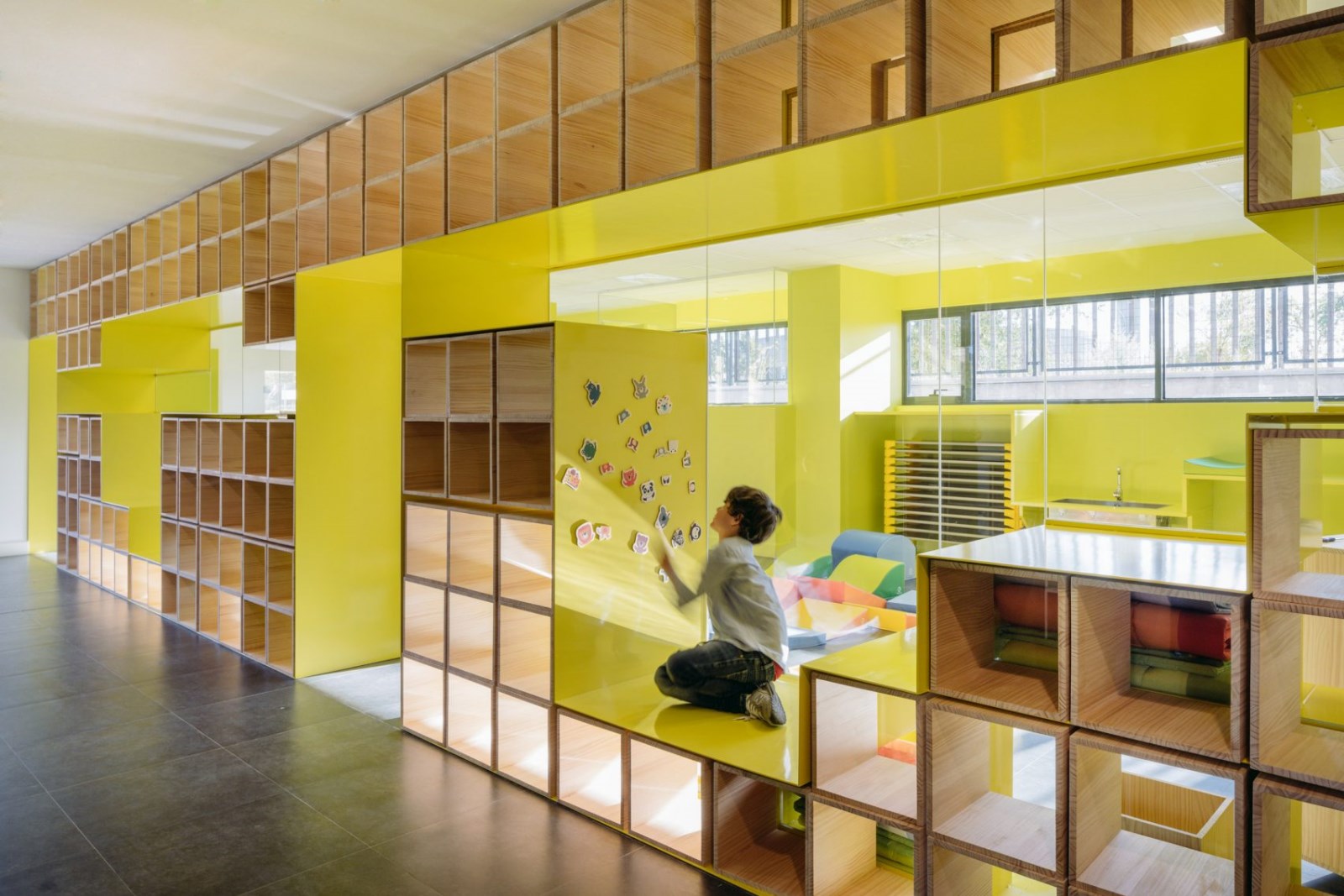Bake Yusuke Seki
2016-11-22 19:00
© Takumi Ota
(小田隆美)


架构师提供的文本描述。这家糖果公司的烘焙起源于北海道著名的奶业传统,这个项目是最新的面包店店面,负责在京都的一个商业区生产和销售该品牌的标志性产品-一种新烤奶酪馅饼。
Text description provided by the architects. The confectionary company BAKE traces its origins to the famed dairy farming tradition of Hokkaido.This project is the newest bakery storefront, tasked with the production and sales of the brand’s signature item — a freshly baked cheese tart– in a Kyoto shopping district.
© Takumi Ota
(小田隆美)


日本历史的各个层次仍然是最深的,也是最完整的。京都的本土文化一直吸引着许多人,但近年来,在其街道上的客人数量有时会膨胀至居民人口的近两倍。由于这种流入的性质,吸引这么多人的传统本身已经被调整,纳入了在国际上更容易接受的行为模式。
The layers of Japanese history remain deepest and most wholly intact here. The culture that is local to Kyoto has always attracted many, but in recent years, at times, the number of guests on its streets swells to nearly double the resident population. By nature of this influx, the tradition that appeals to so many has itself modulated, incorporating patterns of behavior that are more accepting in international terms.
© Takumi Ota
(小田隆美)


这方面的实验,变形和重新概念化‘本地’,直到全球范围内,启发了建材的选择。一个与此相关的推动当地沟通方式的扩展,要求他们既有关系又有丰富的潜力。
Experimentation with this context, deforming and re-conceptualizing ‘Local’ until global in scope, inspired the selection of building materials. A correlating push for an expansion in local’s mode of communication demanded that they be both relational and rich in potential.
Floor Plans
平面图


奶酪馅饼在商店后面的开放式厨房里刚烤好,很快就排好了队,摆在一个用乐高做的柜台上。这种建筑结构是口语可能不同的人之间交流的共同语言。它的吸引力是普遍的,直观的,几乎每一代人都能感受到它的吸引力。它唤起了一种亲密感,创造了一个将人们与这个空间联系在一起的时刻。
Cheese tarts, freshly baked in the open kitchen at the back of the store, are soon lined up and displayed on a counter constructed of Lego. This architectural fabric serves as the shared language of communication between those whose spoken language may differ. Its appeal is universal, intuitive, and its attraction felt by nearly every generation. It evokes a sense of intimacy, creating a moment that connects people to this space.
© Takumi Ota
(小田隆美)


© Takumi Ota
(小田隆美)


© Takumi Ota
(小田隆美)


同时,零售区的墙壁采用了传统的日本茶馆建筑中的格子框架技术-“石塔吉-麦道”(Shitaji-Mado)技术。网格的确切规格严格由每个地区的工匠协会管理,没有两个完全相同。左部分暴露,这些墙允许客户与一个新的传统的迭代,同时鼓励一个互动,旧的外墙覆层。因此,商店被赋予了坚定的位置感,回荡着对该地区的崇敬。
At the same time, the walls of the retail area employ “Shitaji-Mado”, a lattice framework technique traditionally used in the construction of Japanese teahouses. The exact specifications of the grid are strictly governed by each locality’s respective guild of artisans, with no two being exactly the same. Left partially exposed, these walls allow customers to interact with a new iteration of tradition, while simultaneously encouraging an interaction the older exterior wall cladding. The store is thereby given a firm sense of place, reverberating with a reverence for the region.
© Takumi Ota
(小田隆美)


通过这个项目,Seki通过反思和挖掘当地固有的潜力,揭示了一个新的意义。
Through this project, Seki has uncovered a new significance by reflecting on and tapping into the potential intrinsic to the locality itself.
© Takumi Ota
(小田隆美)


































Architects Yusuke Seki
Location Kyoto, Kyoto Prefecture, Japan
Category Interior Design
Project Year 2016































